Home>Storage Ideas>Storage Baskets>What To Plant In Hanging Baskets In Shade
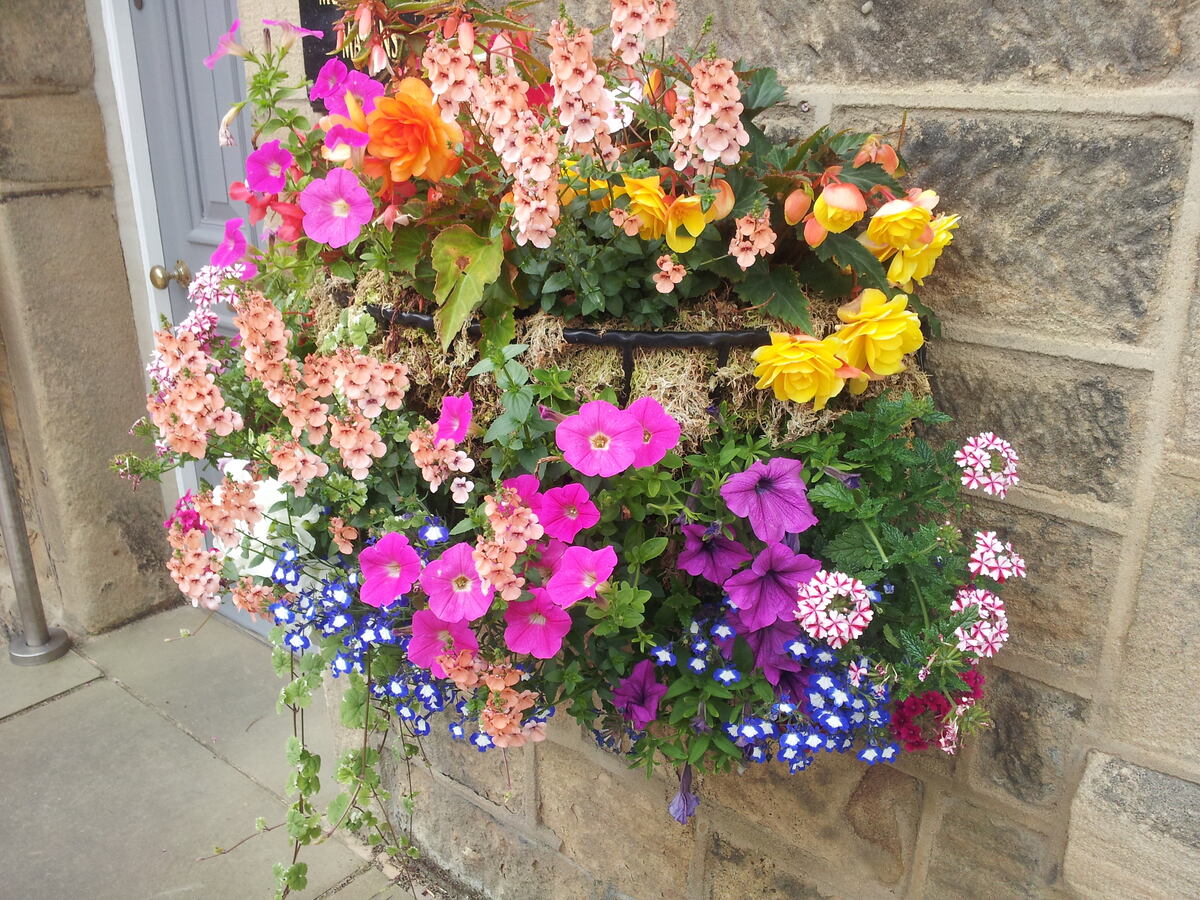

Storage Baskets
What To Plant In Hanging Baskets In Shade
Modified: October 20, 2024
Discover the best plants for hanging baskets in shady areas. Transform your space with beautiful storage baskets that thrive in low light conditions.
(Many of the links in this article redirect to a specific reviewed product. Your purchase of these products through affiliate links helps to generate commission for Storables.com, at no extra cost. Learn more)
Introduction
Welcome to the wonderful world of hanging baskets in shade! If you have a shady spot in your garden or want to add some greenery to your porch or balcony where direct sunlight is limited, hanging baskets are the perfect solution. Not only do they add a touch of beauty and color to your outdoor space, but they also provide an opportunity to indulge your gardening passion even in challenging conditions.
Planting in hanging baskets offers a unique way to create stunning visual displays while utilizing vertical space. Whether you have a small balcony or a spacious garden, these baskets can transform any area into a lush and vibrant oasis. They not only add dimension to your space but also provide the flexibility to experiment with different plant varieties and arrangements.
One of the key advantages of using hanging baskets in shade is the versatility they offer. By strategically placing these baskets in areas with limited direct sunlight, you can transform dull and dreary spots into captivating corners. Whether it’s a covered porch, under the shade of trees, or a shaded balcony, hanging baskets create an opportunity to add a splash of color and greenery to areas that might otherwise go unused.
When choosing plants for hanging baskets in shade, there are a few factors to consider. First and foremost, you’ll want to choose plants that thrive in low light conditions. Look for shade-loving plants that are specifically suited for growing in containers. Additionally, it’s important to consider the size and shape of the basket, as well as the overall aesthetic you want to create.
In this article, we will explore a variety of plants that are well-suited for hanging baskets in shade. From vibrant blooms to unique foliage, there are plenty of options to choose from. So, let’s dive into the fascinating world of shade-loving plants and discover the perfect additions to create your own hanging basket masterpiece.
Key Takeaways:
- Create stunning and vibrant hanging basket displays in shady areas with shade-loving plants like impatiens, begonias, and fuchsias. Their unique foliage and colorful blooms add beauty and elegance to any outdoor space.
- Hanging baskets in shade offer a creative solution to maximize space, add visual interest, and enhance privacy. Experiment with different shade-loving plants to create captivating and lush displays in challenging conditions.
Read more: How To Plant Petunias In Hanging Baskets
Benefits of Planting in Hanging Baskets in Shade
Planting in hanging baskets in shade offers a multitude of benefits for both seasoned gardeners and beginners alike. Here are some of the key advantages:
- Maximize Space: If you have limited garden space or a small balcony, hanging baskets in shade provide an excellent solution. By utilizing vertical space, you can create an abundance of greenery and flowers without sacrificing valuable ground space.
- Add Visual Interest: Hanging baskets add a new level of visual interest to any space. They can be placed at various heights, creating a stunning cascade of blooms and foliage that catches the eye and adds depth to your outdoor area.
- Flexible Placement: Whether you have a covered patio, a shady corner of your garden, or a balcony shielded from direct sunlight, hanging baskets in shade allow you to create vibrant displays where traditional potted plants might struggle to thrive.
- Easy Maintenance: Shade-loving plants typically require less sunlight and are often more tolerant of cooler temperatures. This means that they can be easier to care for compared to sun-loving plants. Additionally, hanging baskets are at eye level, making it easier to monitor their moisture levels and address any maintenance needs.
- Create a Relaxing Atmosphere: Hanging baskets in shade can help create a tranquil and soothing atmosphere. The gentle sway of the baskets in the breeze, coupled with the lush foliage and colorful blooms, adds an element of serenity and relaxation to any outdoor space.
- Enhance Privacy: Placing hanging baskets strategically in areas that need privacy, such as on a balcony railing or along a fence, can help create a natural barrier while adding beauty and greenery to the space.
- Experiment with Plant Varieties: Planting in hanging baskets gives you the opportunity to experiment with a wide range of shade-loving plants. From vibrant flowers to unique foliage, you can mix and match different varieties to create your own personalized displays.
With these benefits in mind, it’s clear that planting in hanging baskets in shade is not only a practical solution for limited space but also a creative way to add beauty and charm to your outdoor area. So, let’s explore the considerations for choosing plants that thrive in this environment.
Considerations for Choosing Plants for Hanging Baskets in Shade
When selecting plants for hanging baskets in shade, there are a few important considerations to keep in mind. By understanding these factors, you can ensure that you choose the right plants that will thrive in a low-light environment and create a stunning display. Here are some key considerations:
- Light Requirements: While shade-loving plants can tolerate lower levels of light, it’s crucial to determine the specific light conditions in your chosen location. Some plants prefer full shade, while others can tolerate partial shade or dappled sunlight. Assess the amount of sunlight the area receives to ensure you select plants that will thrive in those conditions.
- Size and Shape of the Basket: Consider the size and shape of the hanging basket when choosing plants. Larger baskets can accommodate a greater number of plants or larger varieties, while smaller baskets may require more compact plants. Additionally, the shape of the basket will determine the overall aesthetic. Hanging baskets with a cascading shape, for example, are perfect for trailing plants.
- Color Palette: Think about the color scheme you want to achieve. Do you prefer vibrant, bold blooms or a more subtle and monochromatic palette? Consider how different plants will complement each other in terms of color and texture. Mixing contrasting or complementary colors can create a striking visual display.
- Growth Habit: Take into account the growth habit of the plants you choose. Some varieties may spread or vine, while others grow upright. Mixing different growth habits can add interest and variety to your hanging baskets.
- Maintenance Requirements: Consider the amount of maintenance you’re willing to commit to. Some plants require more attention, such as regular watering or deadheading, while others are more low-maintenance. Choose plants that align with your gardening style and the amount of time you can dedicate to their care.
- Seasonal Interest: If you want your hanging baskets to provide year-round beauty, consider selecting plants that offer seasonal interest. This could include flowers that bloom at different times of the year, foliage that changes color in the fall, or evergreen plants that provide year-round greenery.
- Compatibility of Plants: While it’s exciting to mix and match different plant varieties, it’s important to consider their compatibility in terms of water and light requirements. Choose plants that have similar needs to ensure they thrive in the same hanging basket.
By considering these factors, you can select the perfect combination of plants that will not only thrive in shade but also create a visually stunning display. Now, let’s explore a list of shade-loving plants that are well-suited for hanging baskets.
List of Plants Suitable for Hanging Baskets in Shade
When it comes to selecting plants for hanging baskets in shade, there are numerous options to choose from. Here is a curated list of shade-loving plants that are well-suited for hanging baskets:
- Impatiens: These colorful annuals are known for their vibrant blooms and ability to thrive in shady conditions.
- Begonias: Begonias offer a wide variety of options, including fibrous-rooted and tuberous begonias, with their beautiful blooms and striking foliage.
- Fuchsia: Fuchsias, known for their drooping flowers, are hardy plants that can add a touch of elegance to your hanging baskets.
- Coleus: With their stunning foliage in a range of colors and patterns, coleus plants add a vibrant and artistic touch to your hanging baskets.
- Lobelia: These delicate flowering plants bloom profusely and are ideal for adding a splash of blue, purple, or white to your hanging baskets.
- Pansies: Pansies are cool-season annuals that come in a variety of shades, providing cheerful blooms even in shady areas.
- Torenia: Also known as wishbone flower, torenia offers unique trumpet-shaped blooms in shades of blue, purple, and pink.
- Violas: Violas, with their dainty blossoms in a wide range of colors, are excellent for adding charm and beauty to your hanging baskets.
- Sweet Alyssum: These fragrant annuals are perfect for cascading over the sides of hanging baskets, with their tiny flowers creating a delicate and sweet ambiance.
- Polka Dot Plant: With its distinctive spotted foliage in vibrant shades of pink, white, and green, the polka dot plant adds a pop of color to any hanging basket.
- Nasturtium: Nasturtiums produce vibrant, edible flowers in shades of red, orange, and yellow, and their trailing growth habit makes them ideal for hanging baskets.
- Lamium: Lamium, also known as dead nettle, features variegated foliage in shades of silver and green, adding texture and contrast to your hanging baskets.
- Caladium: Caladiums are prized for their large, heart-shaped leaves in a variety of bold colors, making them a stunning addition to any shade-loving hanging basket.
- Maidenhair Fern: With delicate, feathery fronds, maidenhair ferns bring an elegant and airy touch to hanging baskets, thriving in shady and moist conditions.
- Baby’s Tears: Baby’s tears feature tiny, lush leaves that create a dense and cascading effect in hanging baskets, adding a touch of green to shaded areas.
These are just a few examples of shade-loving plants that can thrive in hanging baskets. Explore these options and get creative with your plant combinations to create beautiful and captivating displays.
Now that you have a list of suitable plants, it’s time to get your hands dirty and start creating your own hanging basket masterpiece!
Impatiens
Impatiens are a popular choice for hanging baskets in shade due to their vibrant blooms and ability to thrive in low-light conditions. These annuals come in a variety of colors, including shades of pink, red, purple, and white, allowing you to create a stunning visual display in your hanging baskets.
Impatiens are known for their prolific blooming and ability to add a pop of color to shady areas. They have simple, five-petaled flowers that come in single or double forms, depending on the variety. This makes them a versatile option for creating hanging baskets with different textures and visual interest.
When planting impatiens in hanging baskets, it’s important to choose a well-draining potting mix to avoid waterlogged roots. These plants prefer moist soil, but overwatering can cause root rot. Regular watering and ensuring adequate drainage are key to keeping impatiens healthy.
While impatiens can tolerate a range of light conditions, they do best in partial shade or filtered sunlight. Avoid placing them in direct sunlight, as this can cause the flowers to wilt and the leaves to become scorched. Hanging baskets can be positioned under the eaves of a house, on a porch, or in areas with dappled shade to provide the ideal growing environment for impatiens.
Impatiens have a bushy growth habit and can fill out hanging baskets beautifully. They can be grown alone for a full, lush display or combined with other shade-loving plants to create interesting and harmonious compositions. Their size makes them suitable for both small and large hanging baskets.
When it comes to maintenance, regular deadheading is recommended to encourage continuous blooming and to keep the plants looking their best. Trim any leggy stems to promote bushier growth. Additionally, fertilize the impatiens with a balanced liquid fertilizer once a month to provide them with the nutrients they need to thrive.
In summary, impatiens are a fantastic choice for hanging baskets in shade. Their vibrant blooms, low-light tolerance, and versatile growth habit make them a go-to option for adding color and beauty to your outdoor space. With proper care and maintenance, impatiens can provide months of stunning displays in your hanging baskets.
Read more: When To Plant Winter Hanging Baskets
Begonias
Begonias are a popular choice for hanging baskets in shade, thanks to their beautiful blooms and striking foliage. With a wide variety of species and cultivars to choose from, begonias offer endless possibilities for creating visually stunning hanging basket displays.
One of the key features of begonias is their diverse foliage. Some varieties showcase asymmetrical or patterned leaves in shades of green, silver, bronze, or burgundy. The unique foliage alone can add texture and interest to your hanging baskets, even without blooms. This makes begonias a versatile choice, allowing you to create visually appealing displays that are both vibrant and varied.
Begonias also produce delicate flowers that come in a range of colors, including shades of pink, red, orange, and white. The flowers may be single, double, or even ruffled, depending on the specific variety. These blooms provide an additional layer of beauty to your hanging baskets, attracting the eye and adding a touch of elegance to any outdoor space.
When it comes to care, begonias prefer well-draining soil and appreciate consistent moisture. However, it’s important to avoid overwatering, as their roots can be sensitive to excessive moisture. Regular watering is necessary to keep the soil evenly moist, but make sure the water drains away properly to avoid root rot.
Begonias thrive in partial shade or filtered sunlight, making them ideal for hanging baskets placed in areas with limited direct sunlight. They prefer temperatures that are not too hot, so they are particularly well-suited for shady spots. Hanging baskets with begonias can be positioned under the shade of trees, on covered patios, or in any spot that receives dappled sunlight throughout the day.
When it comes to maintenance, begonias are relatively easy to care for. Deadheading spent blooms can promote the continuous production of flowers. Pruning leggy stems or pinching back the plants can encourage bushier growth, resulting in fuller and more compact hanging baskets.
In terms of size, begonias can range from small and compact varieties to larger, more vigorous ones. This makes them suitable for various sizes of hanging baskets. The smaller varieties can create delicate and charming displays, while the larger ones can provide a more dramatic impact.
Whether you choose to grow begonias on their own or pair them with other shade-loving plants, they are sure to add beauty and elegance to your hanging baskets. With their stunning foliage and delightful blooms, begonias offer endless opportunities for creating stunning displays that will be the envy of any garden.
Fuchsia
Fuchsias are a popular choice for hanging baskets in shade, thanks to their distinctive drooping flowers and graceful trailing growth habit. These stunning plants add an element of elegance and beauty to any outdoor space, making them a perfect choice for creating captivating hanging basket displays.
Fuchsias are known for their pendulous flowers that come in a variety of colors, including shades of pink, purple, red, and white. The unique shape of the flowers, with their elongated petals and contrasting sepals, creates an eye-catching display that is sure to impress. The flowers can bloom profusely, covering the plant in a cascade of color.
One of the advantages of fuchsias is their ability to thrive in shaded areas. While they prefer filtered sunlight or partial shade, they can also tolerate some morning or evening sun. Placing hanging baskets with fuchsias under the shade of trees, on a covered porch, or in any area that receives indirect light throughout the day will provide them with the ideal growing conditions.
When it comes to watering, fuchsias prefer consistently moist soil. Ensure that the hanging baskets have good drainage to prevent waterlogging, as excessive moisture can lead to root rot. Regular watering is necessary, especially during hot summer months, to keep the soil evenly moist. Mulching the top of the soil can help retain moisture and regulate temperature.
Fuchsias feature a bushy growth habit with trailing stems, which makes them perfect for hanging baskets. They can be grown alone for a dramatic display, or combined with other shade-loving plants to create interesting and complementary compositions. Their elegant and cascading form adds depth and dimension to hanging baskets, creating a visually stunning effect.
Maintenance of fuchsias is relatively simple. Regular deadheading of spent blooms is recommended to promote continuous flowering. Pruning can also be done to maintain the desired size and shape of the plant. Keep an eye out for pests, such as aphids or whiteflies, and address them promptly if necessary.
With their striking flowers and trailing growth habit, fuchsias are sure to be a focal point in your hanging basket displays. Whether you choose single-flowered or double-flowered varieties, their beauty and elegance will elevate the ambiance of your outdoor space. So, bring some charm and grace to your hanging baskets with the delightful fuchsia.
Coleus
Coleus plants are a fantastic choice for hanging baskets in shade, thanks to their vibrant and eye-catching foliage. With their stunning array of colors and patterns, these plants can add a touch of artistry and visual interest to your hanging basket displays.
One of the main attractions of coleus plants is their foliage. The leaves come in a wide variety of colors, including shades of green, red, yellow, purple, and orange. What makes coleus particularly intriguing is the unique variegation and patterns that adorn their leaves. Stripes, spots, and intricate designs create a mesmerizing display that can serve as a focal point in your hanging baskets.
When it comes to light requirements, coleus prefers bright, indirect light or partial shade. While they can tolerate some morning sun, it’s best to avoid exposing them to full afternoon sun, as it can scorch their delicate leaves. Placing hanging baskets with coleus in areas with dappled light, under the shade of trees, or on a covered porch will provide them with the ideal growing conditions.
In terms of watering, coleus plants prefer slightly moist soil. It’s important to water them regularly, allowing the soil to dry out slightly between watering sessions. Overwatering can lead to root rot, so ensuring proper drainage in the hanging baskets is essential.
One of the advantages of coleus is their ability to adapt to different container sizes and shapes. They can be grown in both small and large hanging baskets, depending on the desired aesthetic. The bushy growth habit of coleus plants gives them a full and lush appearance, making them suitable for standalone displays or combined with other shade-loving plants.
Coleus plants are relatively low-maintenance. Regular pinching or pruning can help control their size and shape, and it also encourages bushier growth. Deadheading the flowers, which typically appear in spikes but are not the main attraction of coleus, can redirect the plant’s energy to promoting foliage growth.
As a relatively fast-growing plant, coleus can benefit from occasional feeding with a balanced liquid fertilizer. This helps provide the necessary nutrients for vibrant and healthy foliage. Keep an eye out for any pests, such as aphids or spider mites, and address them immediately if detected.
With their vibrant foliage and unique patterns, coleus plants are a surefire way to add an artistic touch to your hanging baskets. Whether you opt for a monochromatic display or mix different patterns and colors, coleus will undoubtedly create a visually stunning and captivating hanging basket showpiece.
Lobelia
Lobelia is a delightful choice for hanging baskets in shade, known for its delicate and abundant flowers. With its vibrant pops of blue, purple, or white, lobelia adds a touch of elegance and beauty to any hanging basket display.
What makes lobelia particularly appealing is its profuse blooming. The small, five-petaled flowers cover the plant in clusters, creating a stunning carpet of color. While blue is the most common color, lobelia also comes in shades of purple and white, allowing you to create different color schemes in your hanging baskets.
When it comes to light requirements, lobelia prefers partial shade or filtered sunlight. While it can tolerate some morning sun, it’s best to avoid exposing it to full afternoon sun, as it can cause the flowers to fade and the plant to wilt. Hanging baskets with lobelia should be placed in shaded areas, under the eaves of a house, or on a covered porch to provide the ideal growing conditions.
Lobelia appreciates consistently moist soil, but it’s important to avoid overwatering. Ensure that the hanging baskets have good drainage to prevent waterlogged roots, as excessive moisture can lead to root rot. Regular watering is necessary, especially during hot summer months, to keep the soil evenly moist.
One of the advantages of lobelia is its trailing growth habit, which makes it perfect for hanging baskets. The cascading stems can spill over the edges of the basket, creating a beautiful and graceful display. Lobelia can be grown alone for a striking visual impact, or combined with other shade-loving plants to create interesting and diverse compositions.
In terms of maintenance, lobelia is generally low-maintenance. Deadheading spent flowers can help promote continuous blooming and keep the plant looking tidy. Trimming any leggy stems can encourage bushier growth and maintain a compact shape. Regular fertilizing with a balanced liquid fertilizer can also help with overall health and blooming.
With their abundant and vibrant flowers, lobelia plants will surely captivate attention in your hanging basket displays. Whether you choose a single color or mix different shades, lobelia will add a touch of charm and elegance to your outdoor space.
Pansies
Pansies are a charming and versatile choice for hanging baskets in shade, known for their cheerful and vibrant blooms. With their wide range of colors and beautiful patterns, pansies add a touch of beauty and whimsy to any hanging basket display.
One of the key features of pansies is their ability to bloom in cooler temperatures, making them an excellent choice for shady areas or during the spring and fall seasons. Pansies come in a variety of shades, including vibrant purples, rich yellows, velvety blues, and delicate pastels. What makes pansies particularly captivating is the unique “face” pattern in the center of each flower, which adds a touch of charm and personality.
When it comes to light requirements, pansies prefer partial shade. While they can tolerate some morning sunlight, it’s important to protect them from the intense afternoon sun, as this can cause their flowers to fade. Hanging baskets with pansies should be positioned in areas that receive dappled sunlight or under the shade of trees or a covered porch.
Pansies appreciate well-draining soil that is kept consistently moist. Regular watering is necessary to keep the soil evenly moist, especially during hot summer months. However, it’s important to avoid waterlogged roots, as this can lead to root rot. Adequate drainage in the hanging baskets is essential to maintain the health of the pansies.
One of the advantages of pansies is their compact growth habit, which makes them ideal for hanging baskets. They have a trailing or cascading form that fills out the basket beautifully and produces a lush display of blooms. Pansies can be grown alone for a striking monochromatic effect or combined with other shade-loving flowers to create an array of colors and textures in your hanging baskets.
Maintenance of pansies is relatively simple. Regular deadheading of spent blooms not only keeps the plants looking tidy but also encourages continuous blooming. Pansies can benefit from occasional fertilizing with a balanced liquid fertilizer to promote healthy growth and abundant flowers.
With their charming “faces” and vibrant hues, pansies are sure to add joy and beauty to your hanging baskets. Whether grown in a single color or mixed to create a stunning blend, pansies will brighten up any shaded area and provide a delightful display throughout the cooler months.
Consider planting shade-loving plants such as ferns, begonias, ivy, and fuchsia in hanging baskets for a beautiful and thriving display. Make sure to choose plants that are suitable for the specific light conditions in your shaded area.
Torenia
Torenia, also known as wishbone flower, is an excellent choice for hanging baskets in shade due to its unique trumpet-shaped blooms and its ability to thrive in low-light conditions. With its vibrant colors and charming appearance, Torenia adds a touch of elegance and whimsy to any hanging basket display.
One of the distinctive features of Torenia is its beautifully shaped flowers. The blooms resemble tiny trumpets, with two upper petals forming a “wishbone” shape. The flowers come in a range of shades, including shades of purple, blue, pink, and white. This diversity allows for endless possibilities in creating visually stunning and colorful hanging basket arrangements.
When it comes to light requirements, Torenia prefers partial shade or filtered sunlight. It thrives in areas with limited direct sunlight. Hanging baskets with Torenia should be positioned in shaded areas, under the eaves of a house, or on a covered porch, where they can receive bright, indirect light throughout the day.
Torenia enjoys consistently moist soil, but it’s important to avoid overwatering. Water the hanging baskets regularly, allowing the soil to dry out slightly between waterings. Ensure proper drainage in the baskets to prevent waterlogged roots, as excessive moisture can lead to root rot.
The compact growth habit of Torenia makes it ideal for hanging baskets. It has a trailing nature, with stems that cascade over the sides of the basket. This creates a beautiful and graceful display of flowers. Torenia can be grown alone for a striking effect or combined with other shade-loving plants to create a mix of textures and colors in your hanging baskets.
Maintenance of Torenia is relatively easy. Deadhead spent blooms to encourage continuous flowering and to maintain the tidy appearance of the plant. Fertilize the plants with a balanced liquid fertilizer once a month to provide the necessary nutrients for healthy growth and abundant blooming.
With its charming trumpet-shaped flowers and varied colors, Torenia adds a touch of elegance and sophistication to hanging basket displays. Whether grown in a single color or mixed to create a delightful blend of hues, Torenia is sure to bring joy and beauty to your outdoor space.
Violas
Violas are a charming and versatile choice for hanging baskets in shade, known for their dainty blossoms and delightful fragrance. With a wide range of colors and a compact growth habit, violas can add a touch of beauty and elegance to any hanging basket display.
Violas are known for their petite flowers, which resemble pansies but are smaller in size. These flowers come in a wide array of shades, including vibrant purples, cheerful yellows, soft pinks, and snowy whites. Some varieties also feature delicate patterns and markings on the petals, adding to their visual appeal.
One of the distinguishing features of violas is their delightful fragrance. The sweet scent that emanates from their blooms adds another layer of sensory pleasure to your hanging basket display. Placing the hanging baskets with violas in areas where their fragrance can be appreciated, such as near seating areas or entryways, enhances the overall experience.
Violas are shade-loving plants that thrive in partial shade or filtered sunlight. They can tolerate some morning sun, but it’s important to protect them from the intense afternoon sun, which can cause their flowers to fade. Hanging baskets with violas should be positioned in areas that receive bright, indirect light or under the shade of trees or a covered porch.
When it comes to watering, violas prefer consistently moist soil. Water the hanging baskets regularly, allowing the soil to dry out slightly between waterings. It’s essential to provide proper drainage to prevent waterlogged roots, as excessive moisture can lead to root rot.
The compact growth habit of violas makes them ideal for hanging baskets. They have a trailing or cascading form, creating a lush display of flowers that spills over the edges of the basket. Violas can be grown alone for a vibrant monochromatic effect or combined with other shade-loving plants to create a stunning blend of colors and textures.
Maintenance of violas is relatively simple. Regular deadheading of spent blooms encourages continuous flowering and keeps the plants looking fresh and tidy. Fertilizing with a balanced liquid fertilizer every few weeks helps provide the necessary nutrients for healthy growth and abundant blooms.
With their delicate blossoms, charming fragrance, and compact growth habit, violas are an excellent choice for adding beauty and elegance to your hanging basket displays in shade. Whether grown in a single color or mixed to create a delightful blend of hues, violas will undoubtedly be a showstopper in your outdoor space.
Sweet Alyssum
Sweet Alyssum is a lovely choice for hanging baskets in shade, known for its delicate clusters of small flowers and its sweet fragrance. With its trailing growth habit and profuse blooms, Sweet Alyssum can create a charming and whimsical display in any hanging basket.
One of the main attractions of Sweet Alyssum is its clusters of petite flowers that cover the plant. These flowers come in shades of white, pink, lavender, and purple, providing a soft and romantic touch to your hanging basket display. In addition to their beauty, Sweet Alyssum flowers emit a sweet, honey-like fragrance that adds a pleasant aroma to your outdoor space.
When it comes to light requirements, Sweet Alyssum performs best in partial shade or filtered sunlight. While it can tolerate some morning or late afternoon sun, it prefers to be protected from intense midday sun. Hanging baskets with Sweet Alyssum should be positioned in areas that receive bright, indirect light or under the shade of trees or a covered porch.
Sweet Alyssum appreciates regular watering and prefers slightly moist soil. It’s important to avoid overwatering, as excessive moisture can lead to root rot. Water the hanging baskets regularly, allowing the soil to dry out slightly between waterings. Adequate drainage in the baskets is crucial to prevent waterlogging.
The trailing growth habit of Sweet Alyssum makes it an ideal choice for hanging baskets. Its cascading stems spill over the edges of the basket, creating a lush and vibrant display. Sweet Alyssum can be grown alone for a delicate and ethereal effect or combined with other shade-loving plants to create a mix of textures and colors in your hanging baskets.
Maintenance of Sweet Alyssum is relatively easy. Regular deadheading of spent blooms promotes continuous flowering and helps keep the plant looking tidy. Trimming any leggy growth can encourage bushier growth and maintain a compact form. Additionally, Sweet Alyssum benefits from regular fertilizing with a balanced liquid fertilizer to ensure healthy growth and abundant blooms.
With its delicate clusters of flowers and sweet fragrance, Sweet Alyssum adds a touch of enchantment to hanging basket displays. Whether used alone or combined with other shade-loving plants, Sweet Alyssum will transform your hanging baskets into a charming and captivating oasis.
Polka Dot Plant
The Polka Dot Plant, also known as Hypoestes phyllostachya, is a unique and eye-catching choice for hanging baskets in shade. With its vibrant and speckled leaves, it adds a splash of color and a touch of whimsy to any hanging basket display.
One of the main attractions of the Polka Dot Plant is its distinctive foliage. The leaves are adorned with contrasting spots or splotches in shades of pink, red, white, or green. The variegation and patterning on the leaves resemble polka dots, hence the name. This striking foliage adds texture, visual interest, and a playful element to your hanging baskets.
When it comes to light requirements, the Polka Dot Plant prefers bright, indirect light or partial shade. While it can tolerate some morning sunlight, it’s important to protect it from direct afternoon sun, as this can cause the leaves to burn. Hanging baskets with the Polka Dot Plant should be positioned in areas that receive dappled sunlight or under the shade of trees or a covered porch.
Watering is an essential aspect of caring for the Polka Dot Plant. It prefers consistently moist soil, so it’s important to water it regularly. However, be cautious not to overwater, as it is susceptible to root rot. Allow the top inch of soil to dry out slightly between waterings to maintain optimal moisture levels.
The compact growth habit of the Polka Dot Plant makes it suitable for hanging baskets. It grows bushy and fills out the basket beautifully, providing a lush and colorful display. The unique foliage adds a striking contrast and can be a focal point in your hanging basket arrangements.
Maintenance of the Polka Dot Plant is relatively easy. Pinching back the tips of the plant can encourage bushier growth and prevent legginess. Regularly remove any dried or yellowing leaves to keep the plant looking fresh and tidy. The Polka Dot Plant doesn’t require heavy fertilization, but occasional feeding with a balanced liquid fertilizer can help promote healthy growth.
With its vibrant leaves and playful pattern, the Polka Dot Plant is sure to add a sense of whimsy and charm to your hanging baskets. Whether grown on its own or combined with other shade-loving plants, the Polka Dot Plant will create a visually striking and captivating display.
Nasturtium
Nasturtiums are a vibrant and versatile choice for hanging baskets in shade, known for their abundant and edible flowers. With their cheerful blooms and trailing growth habit, nasturtiums can add a burst of color and a touch of whimsy to any hanging basket display.
One of the main attractions of nasturtiums is their abundant flowers. The blossoms come in shades of orange, red, yellow, and even bi-color varieties, creating a delightful and vibrant display. The flowers not only add beauty to your hanging baskets but are also edible and have a slightly peppery flavor, making them a unique and tasty addition to salads or as a garnish.
When it comes to light requirements, nasturtiums prefer partial shade or filtered sunlight. While they can tolerate some morning or late afternoon sun, it’s best to protect them from intense midday sun, as this can cause the leaves to scorch. Hanging baskets with nasturtiums can be positioned in areas that receive bright, indirect light or under the shade of trees or a covered porch.
Nasturtiums prefer well-draining soil and appreciate regular watering. However, they can tolerate slightly drier conditions compared to other plants. Water the hanging baskets regularly, allowing the soil to dry out slightly between waterings. Be careful not to overwater, as this can lead to root rot. Adequate drainage in the baskets is crucial to maintain the health of the nasturtiums.
The trailing or vining growth habit of nasturtiums makes them well-suited for hanging baskets. Their stems cascade and spill over the edges of the basket, creating a beautiful and dynamic display. Nasturtiums can be grown alone for a vibrant and playful effect or combined with other shade-loving flowers to create an array of colors and textures in your hanging baskets.
Maintenance of nasturtiums is relatively simple. Regular deadheading of spent blooms promotes continuous flowering and keeps the plants looking tidy. Pruning can also be done to control the size and shape of the plant. Nasturtiums are relatively low-maintenance and don’t require heavy fertilization. However, a well-balanced, all-purpose fertilizer applied occasionally can help boost growth and blooming.
With their abundant and edible flowers, nasturtiums bring a sense of vibrancy and versatility to hanging baskets. Whether used for their beauty or their culinary value, nasturtiums are sure to add a cheerful and lively touch to your outdoor space.
Lamium
Lamium, also known as dead nettle, is a shade-loving plant that is perfect for adding texture and contrast to hanging baskets. With its variegated foliage and ability to thrive in low-light conditions, Lamium is an excellent choice for creating visually appealing and dynamic displays.
One of the main attractions of Lamium is its foliage. The leaves come in various shades of silver, green, or white, and many varieties have intricate patterns or markings, adding interest and texture to your hanging basket. The variegated leaves create a stunning backdrop for other plants while providing a touch of elegance and sophistication.
When it comes to light requirements, Lamium excels in partial to full shade. It prefers areas with limited direct sunlight but can tolerate some morning or late afternoon sun. Hanging baskets with Lamium can be positioned in shaded areas, under the eaves of a house, or on a covered porch to provide the ideal growing conditions.
Lamium appreciates moisture-retentive, well-draining soil. It needs regular watering to keep the soil consistently moist. However, be careful not to overwater, as this can lead to root rot. Monitor the moisture levels in the hanging baskets and adjust the watering frequency accordingly to maintain optimal moisture for the Lamium.
The compact growth habit of Lamium makes it well-suited for hanging baskets. While it doesn’t have a trailing or cascading habit like some other plants, its dense growth fills out the basket nicely, creating a full and lush display. Lamium can be grown alone for a monochromatic effect or combined with other shade-loving plants to create a mix of textures and colors in your hanging baskets.
Maintenance of Lamium is relatively easy. Trim any leggy stems to promote bushier growth and maintain an attractive shape. Lamium is generally a low-maintenance plant and doesn’t require heavy fertilization. However, applying a balanced, slow-release fertilizer in spring can help encourage healthy growth and overall vigor.
With its variegated foliage and ability to thrive in shade, Lamium adds a touch of sophistication and charm to hanging baskets. Whether used as a focal point or as a supporting element, Lamium brings texture, contrast, and visual interest to any hanging basket display, making it a fantastic addition to your outdoor space.
Caladium
Caladiums are a stunning choice for hanging baskets in shade, known for their large and colorful heart-shaped leaves. With their bold foliage and vibrant hues, caladiums can transform any hanging basket into an eye-catching masterpiece.
One of the main attractions of caladiums is their foliage. The leaves come in a wide range of colors, including shades of green, pink, red, white, and even combinations of these hues. Some caladium varieties feature intricate patterns, veining, or marbling, adding to their visual appeal. The large, heart-shaped leaves create a tropical and exotic atmosphere in your hanging baskets.
When it comes to light requirements, caladiums thrive in partial shade or filtered sunlight. They prefer areas with limited direct sunlight, as excessive sun exposure can scorch the leaves. Hanging baskets with caladiums can be positioned under the shade of trees, on a covered porch, or in areas that receive bright but indirect light throughout the day.
Caladiums have specific soil requirements to thrive. They prefer well-draining, organically rich soil that retains moisture. Regular watering is necessary to keep the soil consistently moist but avoid overwatering, as it can lead to root rot. Maintaining adequate moisture levels in the hanging baskets will help ensure the health and vitality of the caladiums.
The compact growth habit of caladiums makes them perfect for hanging baskets. While they don’t have a trailing or cascading habit, their lush foliage fills out the basket beautifully, creating a lush and striking display. Caladiums can be grown alone for a bold and dramatic effect or combined with other shade-loving plants to create an array of textures and colors in your hanging baskets.
Maintenance of caladiums is relatively simple. Regularly remove any yellow or discolored leaves to maintain the plant’s overall appearance. Caladiums are relatively low-maintenance and don’t require heavy fertilization. However, applying a balanced, slow-release fertilizer during the growing season can help support their vigorous growth and enhance their colors.
With their large and colorful foliage, caladiums bring a touch of tropical beauty and drama to hanging baskets. Whether used as a focal point or as a part of a mixed planting, caladiums will create a striking and visually captivating display in your outdoor space.
Read more: What Petunias Are Best For Hanging Baskets
Maidenhair Fern
Maidenhair ferns are a delicate and graceful choice for hanging baskets in shade, known for their lacy and airy fronds. With their elegant foliage and preference for low-light conditions, maidenhair ferns bring a touch of beauty and tranquility to any hanging basket display.
One of the main attractions of maidenhair ferns is their intricately divided fronds. The leaves are composed of delicate and feathery leaflets that create a soft and airy texture. The fronds form an attractive cascade, flowing gracefully from the hanging basket and adding a sense of movement and elegance.
When it comes to light requirements, maidenhair ferns thrive in shady conditions. They prefer areas with filtered sunlight or partial shade, as direct sunlight can scorch their delicate foliage. Hanging baskets with maidenhair ferns should be positioned in shaded areas, under the canopy of trees, or on a covered porch to provide the optimal light conditions.
Maidenhair ferns appreciate moist and well-draining soil. It’s essential to water them regularly to keep the soil consistently moist, as allowing it to dry out can cause stress to the fern. However, it’s important to avoid overwatering, as this can lead to root rot. Maintaining proper drainage in the hanging baskets is crucial to prevent waterlogged roots.
The lacy and delicate fronds of maidenhair ferns create a beautiful and cascading display in hanging baskets. Their trailing growth habit allows them to gracefully spill over the edges of the basket, adding a touch of elegance and a sense of movement to your hanging basket arrangement. Maidenhair ferns can be grown alone to showcase their beauty or combined with other shade-loving plants to create an interesting mix of textures.
Maintenance of maidenhair ferns requires a gentle touch. Avoid touching the fronds, as they can be sensitive and easily damaged. Regularly misting the foliage can help increase humidity levels, as ferns thrive in humid environments. Pruning or trimming any discolored or damaged fronds will help maintain the overall appearance of the fern.
With their delicate and lacy fronds, maidenhair ferns bring a sense of beauty and tranquility to hanging baskets. Their graceful presence adds a touch of sophistication and elegance to any shaded area, creating a peaceful and serene atmosphere in your outdoor space.
Baby’s Tears
Baby’s Tears, scientifically known as Soleirolia soleirolii, is a charming and delicate choice for hanging baskets in shade. Known for its small, round leaves cascading down like a lush green carpet, Baby’s Tears adds a touch of beauty and softness to any hanging basket display.
One of the main attractions of Baby’s Tears is its dense growth of tiny leaves. The leaves are bright green and have a delicate, almost tear-like shape, giving the plant its poetic name. When grown in a hanging basket, the trailing stems of Baby’s Tears create a beautiful draping effect, adding a sense of lushness and softness to your hanging basket arrangement.
When it comes to light requirements, Baby’s Tears thrives in partial shade or filtered light. It prefers areas with limited direct sunlight, as exposure to intense sun can cause its delicate leaves to scorch. Hanging baskets with Baby’s Tears should be placed in shaded areas, under the cover of trees, or on a porch protected from direct sunlight.
Moisture is crucial for the health of Baby’s Tears, as it prefers consistently moist soil. Water the hanging baskets regularly, allowing the soil to remain evenly moist. However, take care not to overwater, as Baby’s Tears is susceptible to root rot. Adequate drainage in the hanging baskets will help prevent waterlogging.
The trailing growth habit of Baby’s Tears makes it an ideal choice for hanging baskets. Its cascading greenery creates a lush and enchanting display, perfect for adding a touch of natural beauty to any space. Baby’s Tears can be grown alone for a dense carpet effect or combined with other shade-loving plants to create a unique and textural arrangement.
Maintenance of Baby’s Tears is relatively simple. Regularly trim any leggy or overgrown stems to maintain the desired shape and prevent the plant from becoming too sparse. Pruning also helps to encourage bushier growth. Keep an eye out for pests, such as aphids or mealybugs, and treat them promptly if necessary.
With its delicate and lush green leaves, Baby’s Tears adds a touch of elegance and tranquility to hanging baskets. Whether used on its own or as part of a mixed planting, Baby’s Tears creates a stunning and enchanting display, bringing a sense of calm and natural beauty to any shaded corner of your outdoor space.
Conclusion
Hanging baskets in shade offer a wonderful opportunity to express your creativity and enhance the beauty of your outdoor space. Whether you have a shady balcony, a covered porch, or an area under the shade of trees, there is a wide array of shade-loving plants that can thrive and flourish in hanging baskets.
From the vibrant blooms of impatiens and begonias to the delicate foliage of maidenhair ferns and polka dot plants, these plants add color, texture, and a touch of elegance to your hanging basket displays. They bring life to areas that may otherwise seem dull and create a captivating visual impact.
When choosing plants for hanging baskets in shade, it’s important to consider their light requirements, growth habits, moisture needs, and maintenance preferences. Understanding these factors helps ensure that you select the right plants that will thrive in the specific conditions of your hanging baskets.
Whether you opt for a single plant variety or mix different plants together, the possibilities are endless. You can create harmonious color schemes or vibrant displays that capture attention. The compact growth habits of many shade-loving plants make them ideal for hanging baskets, allowing their foliage or flowers to spill over the edges and create a cascading effect.
Maintaining proper care and regular maintenance, such as watering, pruning, and fertilizing, will help your hanging baskets thrive and remain beautiful throughout the season. Regularly assessing and responding to the needs of the plants will ensure their long-term health and vibrant displays.
Hanging baskets in shade provide not only a visual delight but also numerous benefits. They maximize limited gardening space, add depth and dimension to your outdoor areas, create relaxing atmospheres, and enhance privacy. They also allow for experimentation and creativity in combining different plants to create unique and personalized displays.
So, whether you’re looking to bring color to a shady porch, create a lush oasis in a covered balcony, or add beauty to a garden spot with limited sunlight, don’t overlook the potential of hanging baskets in shade. With a thoughtful selection of shade-loving plants and proper care, you can create stunning and captivating displays that will be the envy of all who see them.
Frequently Asked Questions about What To Plant In Hanging Baskets In Shade
Was this page helpful?
At Storables.com, we guarantee accurate and reliable information. Our content, validated by Expert Board Contributors, is crafted following stringent Editorial Policies. We're committed to providing you with well-researched, expert-backed insights for all your informational needs.
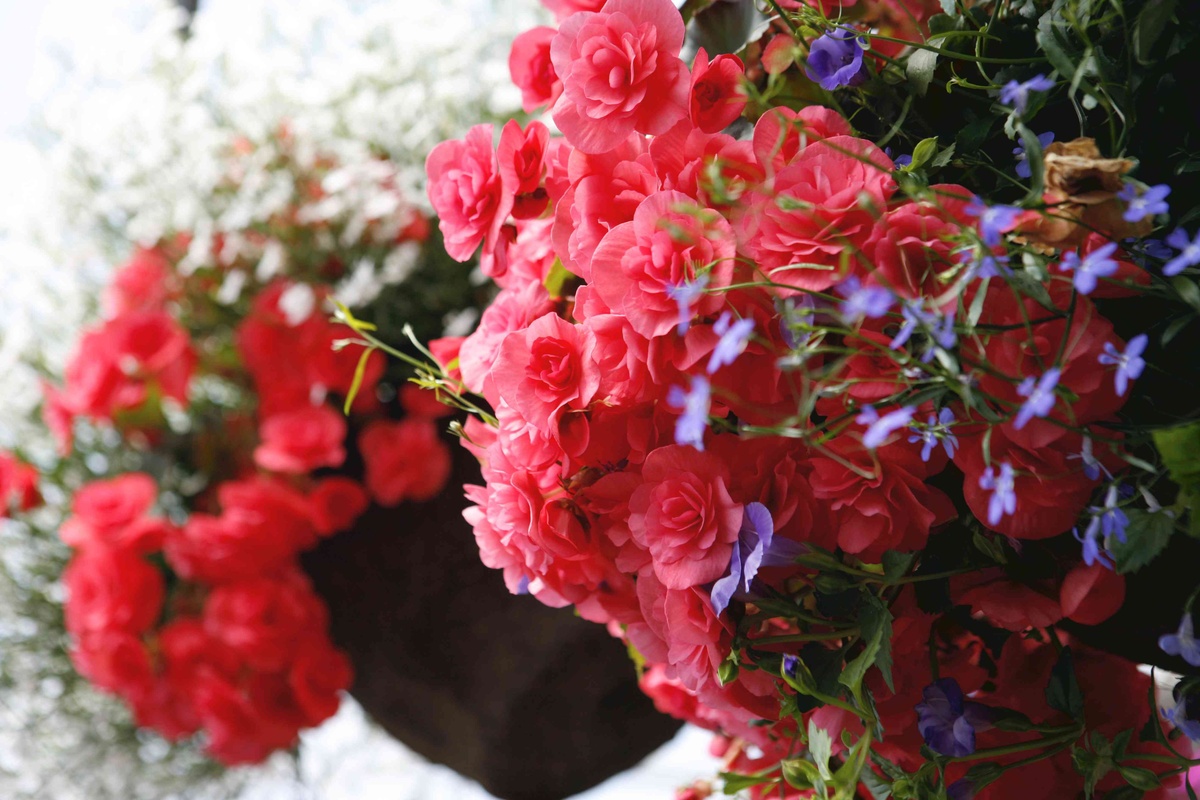
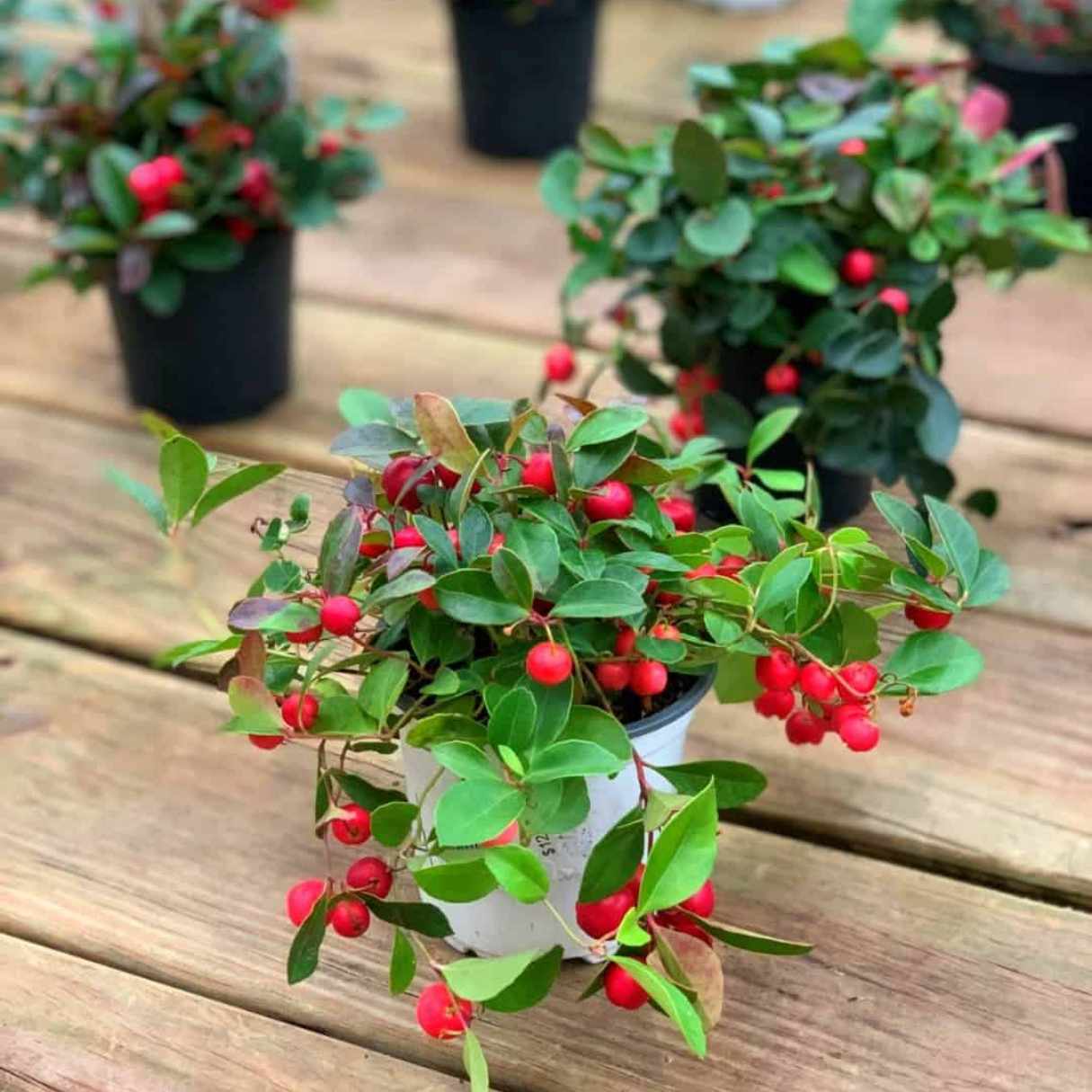
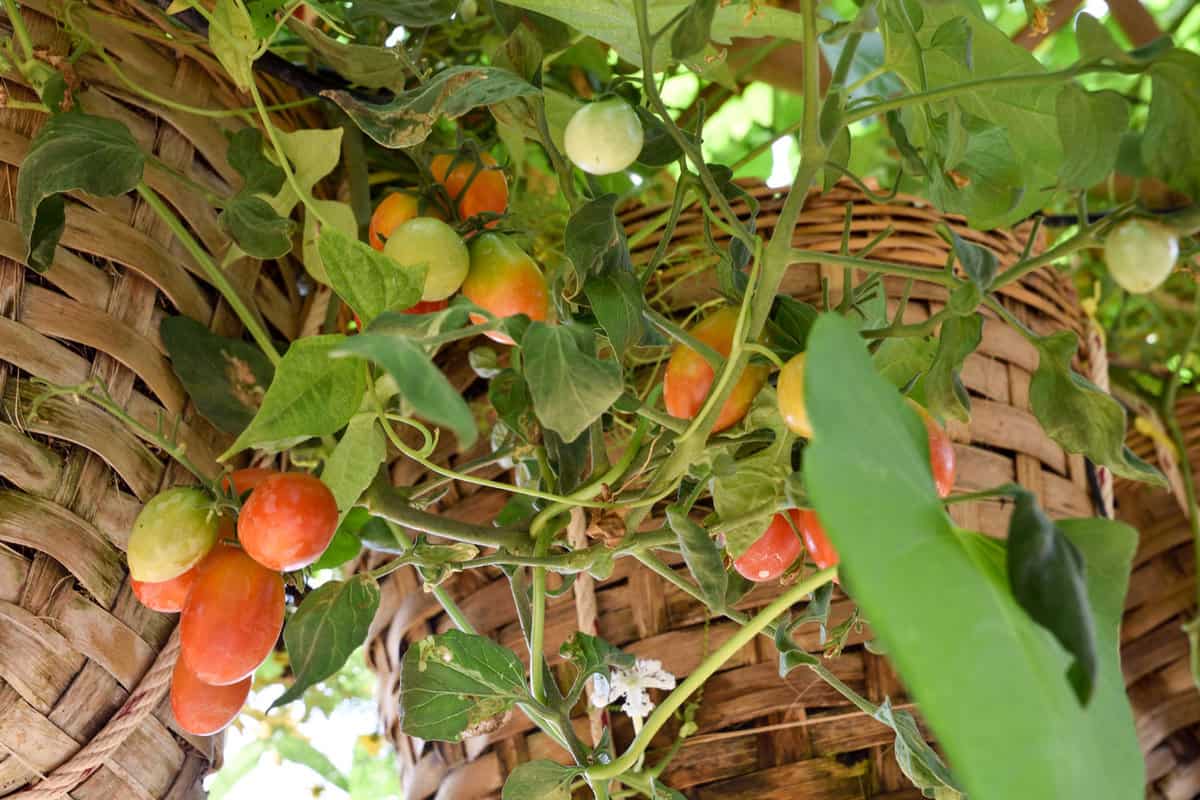

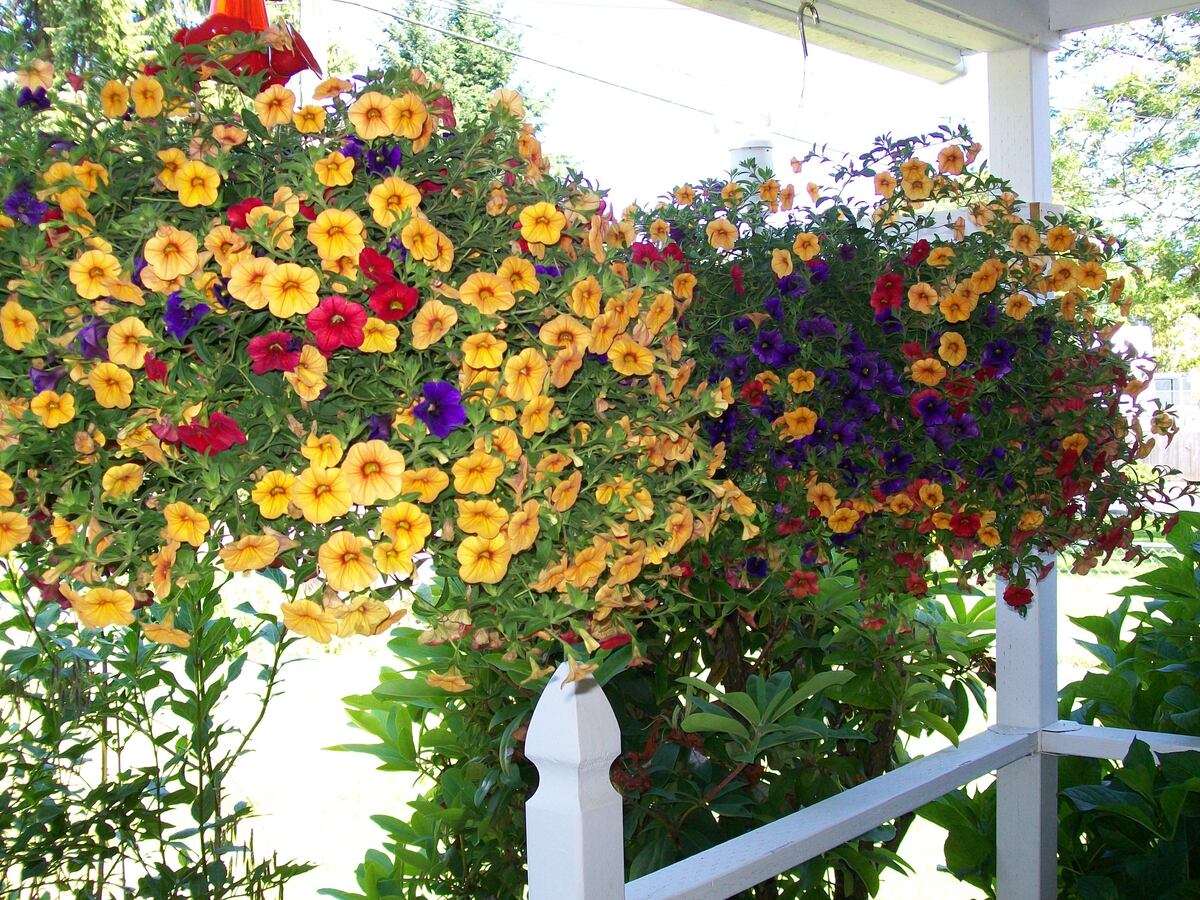
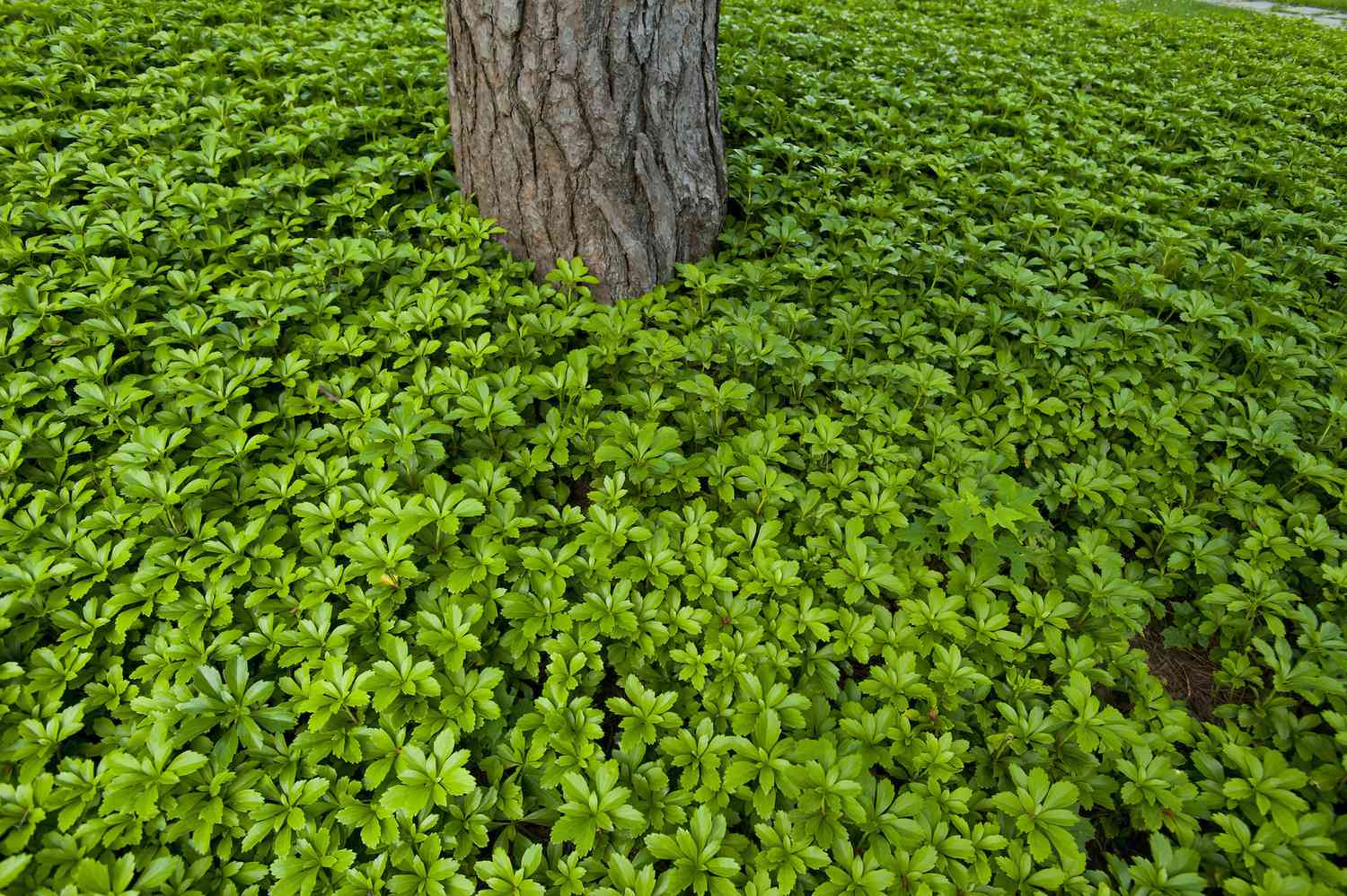
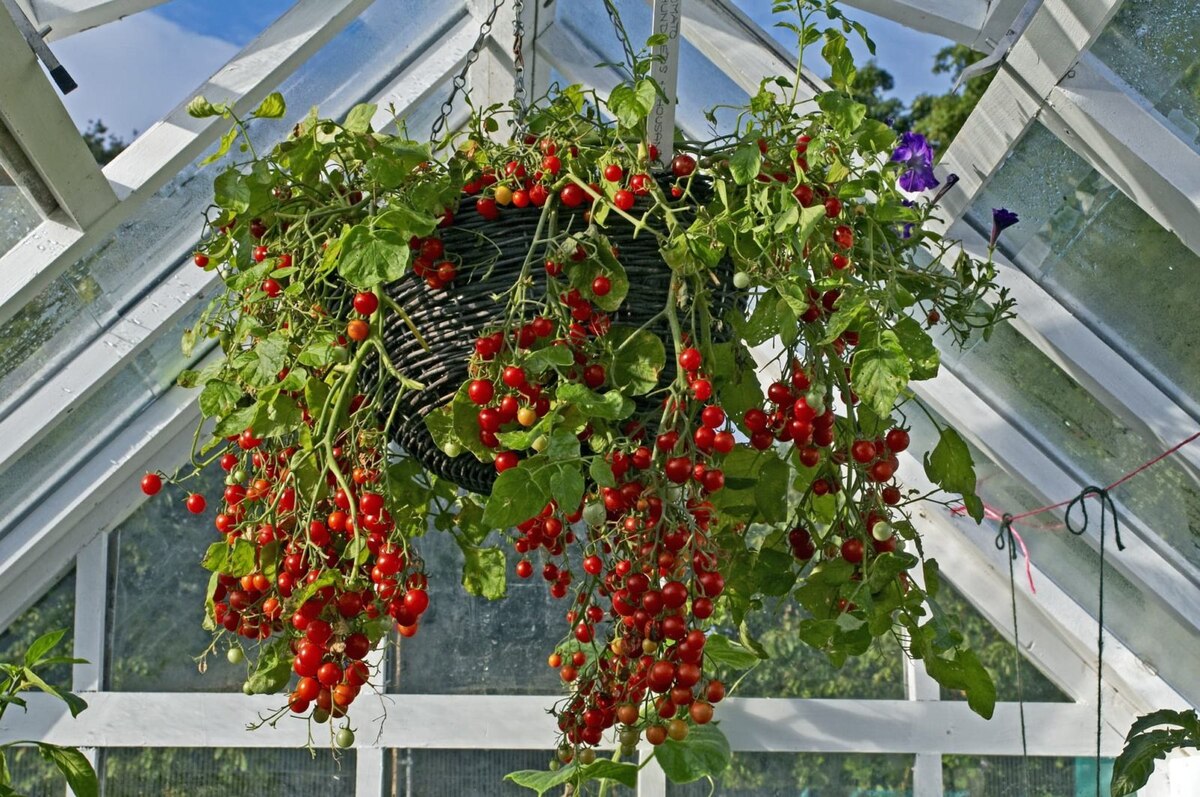


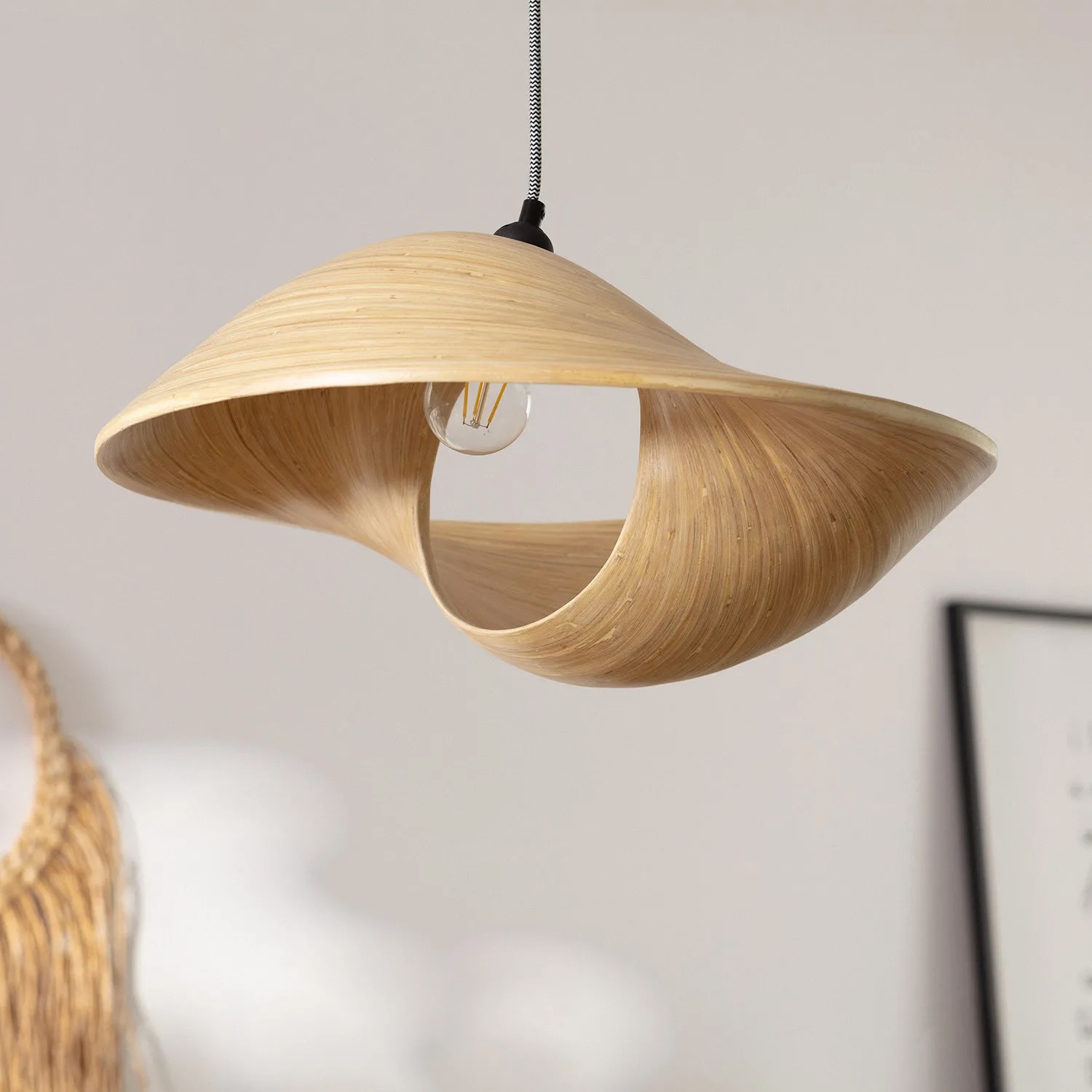
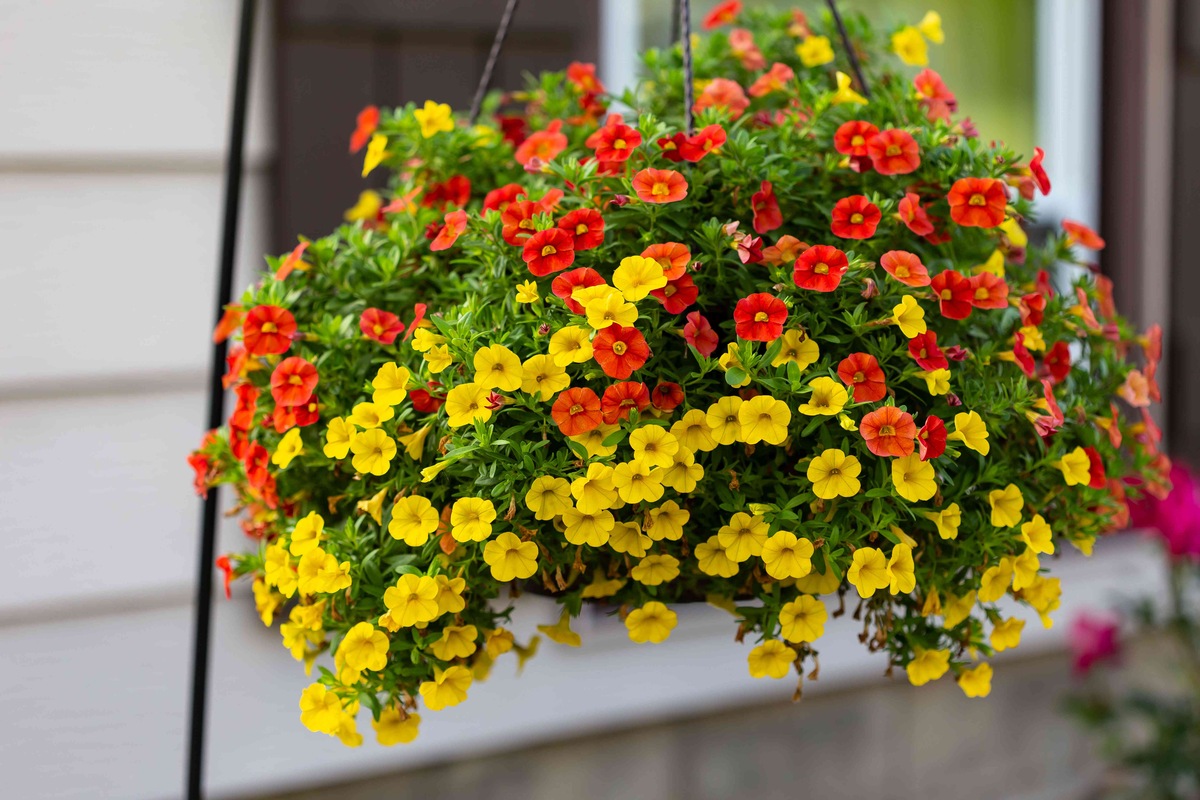

0 thoughts on “What To Plant In Hanging Baskets In Shade”